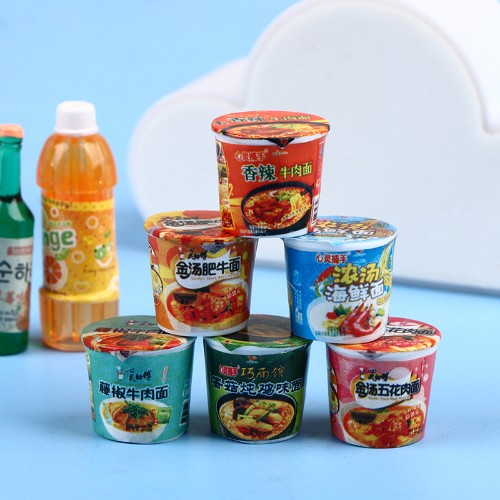Source: Link Testing Instruments Co.,Ltd.

Instant noodles are a common type of noodles. At present, the main packaging methods include bags, barrels, and cups. Most of them are fried and non-fried. The moisture content of these two forms of instant noodles is relatively low. Among them, the noodle cake is easy to become soft, and it also creates conditions for the reproduction of microorganisms, which can easily cause the noodle cake to become moldy. This requires that the packaging of instant noodles should have high moisture resistance to ensure that the noodle cake is in a dry environment. China is a big country in the production and sales of instant noodles. According to statistics, domestic instant noodle production accounts for 1/2 of the world's total output, and consumption accounts for 1/3 of the world's consumption. Such a large market provides a broad development space for the company. However, if the above-mentioned quality problems such as softening and mildew occur within the shelf life of the product, the economic loss and impact on the company will be immeasurable. Therefore, it is necessary to strengthen the detection of moisture-proof performance of instant noodle packaging.
Test method and test equipment
At present, the water vapor transmission rate test methods mainly include cup method, electrolysis method, infrared method, and humidity method. In this paper, the electrolysis method is used to test the water vapor transmission rate of samples. Determination of Water Vapor Transmission Rate of Sheets Electrolytic Sensor Method", this standard is suitable for rapid determination of water vapor transmission rates of plastic films, sheets and multilayer structural materials containing plastics.
The test equipment used in this test is LTWTC-303H water vapor transmission rate test system, which is provided by Link Testing Instruments Co., Ltd. The company independently develops and produces.
The principle of the electrolytic sensor method test: by analyzing the magnitude of the electrolysis current generated by the electrolysis of water molecules, the water vapor transmission rate of the sample is calculated. Between the two test chambers, the upper chamber is filled with nitrogen gas with a certain humidity, and the lower chamber is dry nitrogen gas, so that a certain humidity difference is generated on both sides of the sample, and water vapor penetrates from the high humidity side to the low humidity side through the sample, and the low humidity side The nitrogen gas will carry the permeated water vapor to the electrolytic sensor. By analyzing the electrical signal generated by the electrolytic water vapor of the electrolytic sensor, the amount of water vapor permeating through the unit area of the sample per unit time is calculated, that is, the water vapor transmission rate. .
Test sample and test process
Test sample: The instant noodle bucket produced by a certain enterprise was used as the test sample in this experiment.
Experimental procedure:
1. Sample cutting: Use a special sampler to cut 3 samples from the surface of the instant noodle bucket sample to be tested, and clamp the samples on the 3 test chambers of the equipment, and tighten the test chambers.
2. Test: Set the sample name, test temperature, test humidity and other parameter information, click the test option, and the test starts. Adjust the pressure of nitrogen to make the humidity in the test chamber reach the set value, and use the nitrogen flow adjustment knob to make the nitrogen flow in the upper and lower chambers reach the standard specified value.
3. Results: During the test, the instrument automatically records the change of water molecule content on the low-humidity side, and automatically calculates and displays the test results after the test is over.
Test Results and Analysis
The water vapor transmission rate test values of the instant noodle bucket samples in this test were 10.336 g/(m2·24h), 10.806 g/(m2·24h), 11.075 g/(m2·24h), and the average value was 10.739 g/( m2·24h).
The water vapor transmission rate is an important aspect of the quality monitoring of instant noodle buckets. This performance has an important impact on the quality of the packaged instant noodles within the shelf life. This paper uses the electrolytic sensor principle equipment LTWTC-303H water vapor transmission rate testing system The water vapor transmission rate is tested, the operation of the equipment is simple, the test efficiency is high, and the repeatability of the sample results is good, which can truly reflect the moisture resistance performance of the tested sample.
For more details please visit www.linktesting.org